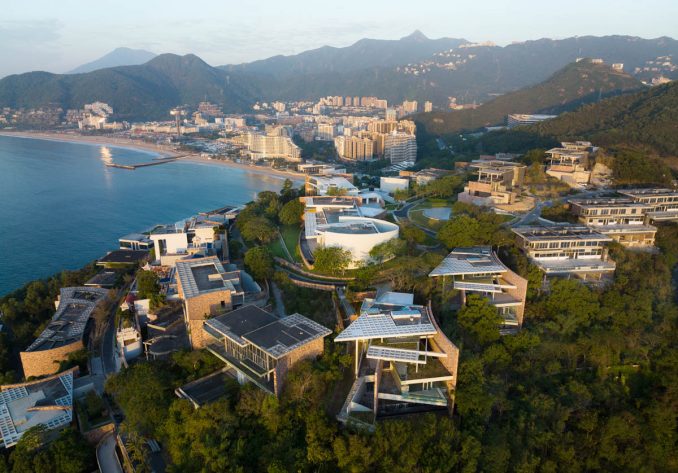
COASTAL MANSION
Vanke Vega Villa Coastal Mansion is a comfortable and livable low-density luxury residence. The project is located in the international coastal resort area, on the central peninsula of Dameisha and Xiaomeisha. It enjoys the ultimate scenery surrounded by the 270° mountain, sea, bay, and city panorama, a 5-level viewing promenade, and a 2.3-kilometer coastline. In addition, the project is also surrounded by business areas, such as a helipad, Dameisha Yacht Club, Yunhai Valley Golf Club, and Sheraton Hotel Group, providing a unique high-end lifestyle to residents.
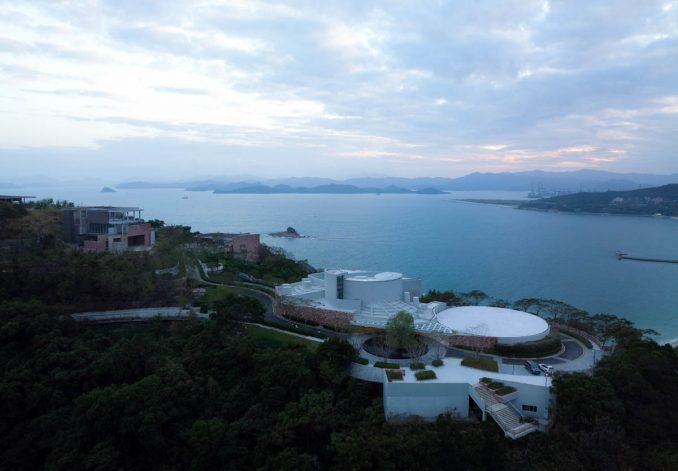
THINKING AND STRATEGY
Vanke Vega Villa is close to nature and not far from the city, so it has genes of both city and nature. In this landscape renovation, starting from the real perception and experience of life, guided by the design concepts of suitability and characteristics, procedural and low-intervention, abstraction and artistic quality, Shenzhen Vanke and GND Landscape respect the ecological system and temperament of the original site, continue the brand spirit, combine the regional characteristics, and integrate the most simple gifts of nature into the space to create a landscape space with “natural beauty, humanistic beauty, and artistic conception”.
CONTINUATION AND RESHAPE
Respect the site characteristics – Based on the continuation and protection of the site language, relying on the topography, this project creates a vertical landscape with rich layers and reshape the relationship between the city and nature, life, and people.
Improve the ecological environment – The project protects and restores the regional ecosystem by replanting hedges, replacing ground cover, clearing weeds, reinforcing and beautifying slopes. This measure can make the living environment and the natural environment organically integrate, develop together, and build a harmonious habitat of harmony between man and nature.
Space Scene creation – Respect the order of the site and nature and embody the perfect combination of natural landscape and practical functions with a simple and concise design language. The integration of nature and humanity, and the integration of architecture and environment have successfully created a landscape space with unique mountain and sea characteristics and a unique scene memory.
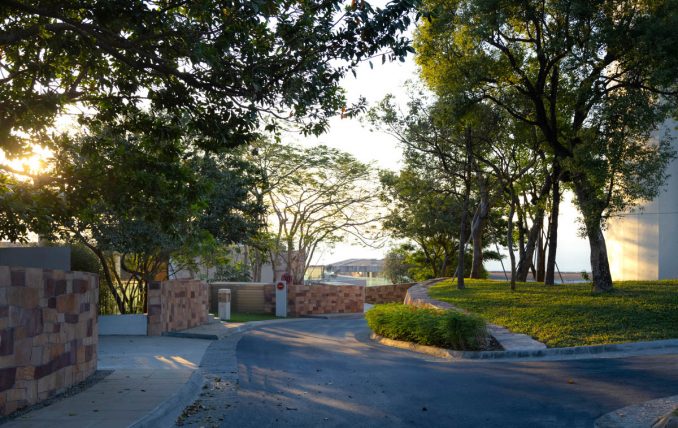
SEQUENCE AND LIGHT
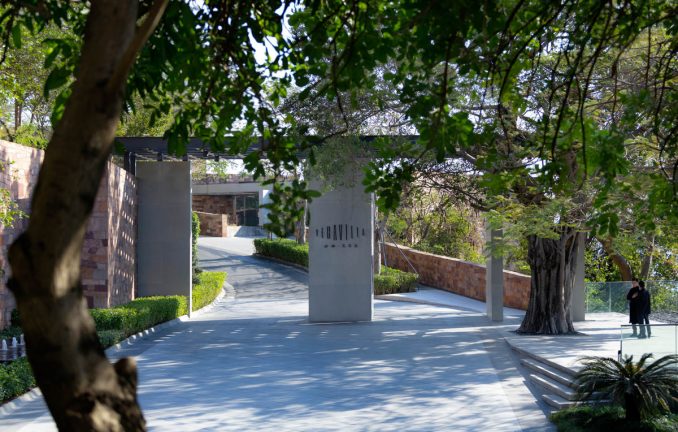
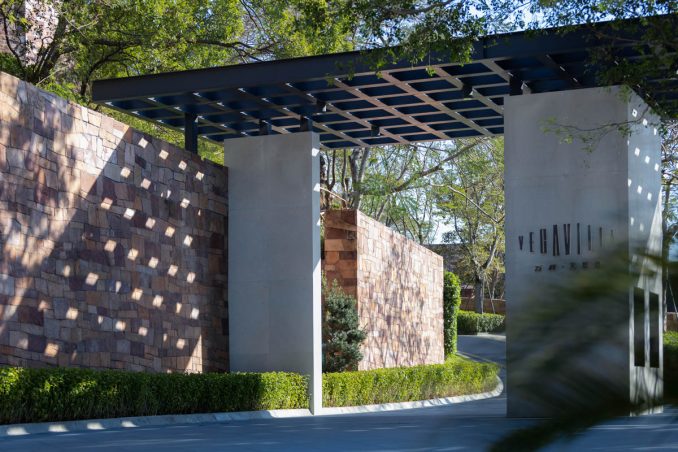
As the first impression of the visitor, the entrance is the focal point of the whole project. The core concept of its design lies in the rigorous and restrained spatial logic. We extend the design to municipal greening to maintain the overall sense of space and use the height difference of the entrance to form a rich landscape experience, attracting people to enter the park naturally and enjoy the wonderful feeling of slowing down.
The porch is hidden behind the tree, so that a framed scene is formed between the porch and the native tree, like a picture scroll, which continues the original beauty of the space. The pure yet extremely expressive raw materials constitute an artistic tension, presenting a perfect fusion of extreme craftsmanship and raw texture, thus further responding to the original concept of the design.
The sun shines through the lush tree canopy and forms mottled light and shadow on the ground, turning the entrance courtyard into an outdoor leisure space.
EXPERIENCE AND INTERACTION
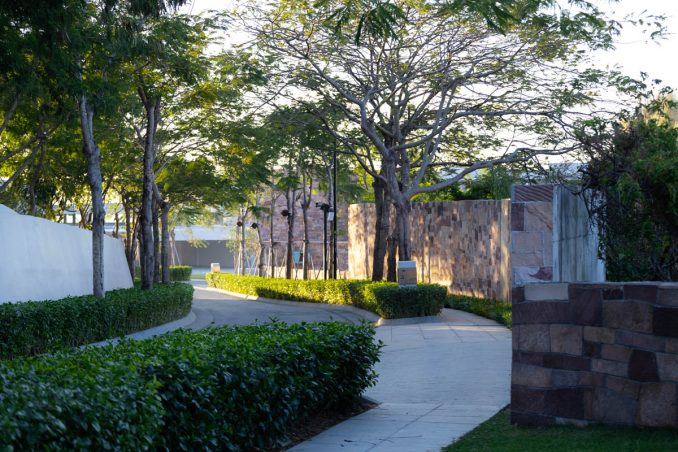
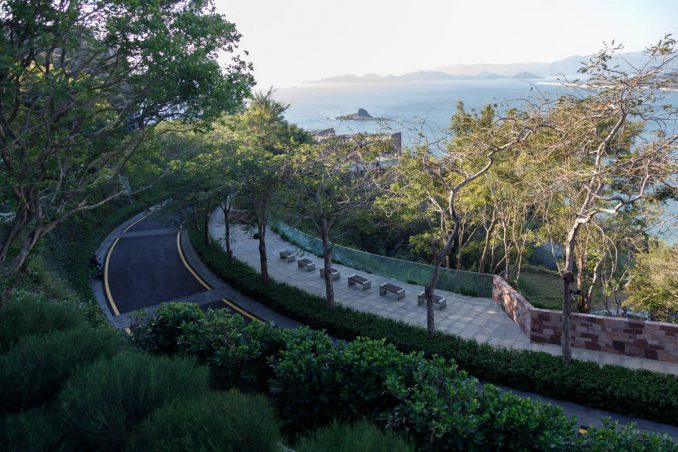
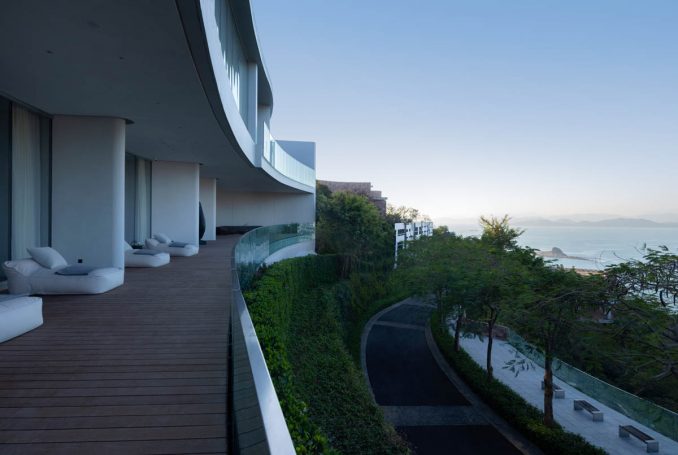
In order to protect and highlight the surrounding natural green landscape, the design of this project aims to avoid large-scale construction and development. Through preliminary research, the characteristics of the site and the improvement points of the regional environment can be sorted out. The road part starts from scene reconstruction, functional supplementation, and landscape extension to integrate the building with the road and the site environment.
In the design of landscape traffic flow, the different viewing angles, such as head-up, upward, and downward are created through the organization of moving lines, the guidance of sight lines and the transformation of space. In addition, the designer creates a series of unique landscape scenes, enhances the sense of experience and interactivity, and makes returning home a pleasure.
NATURE AND ART
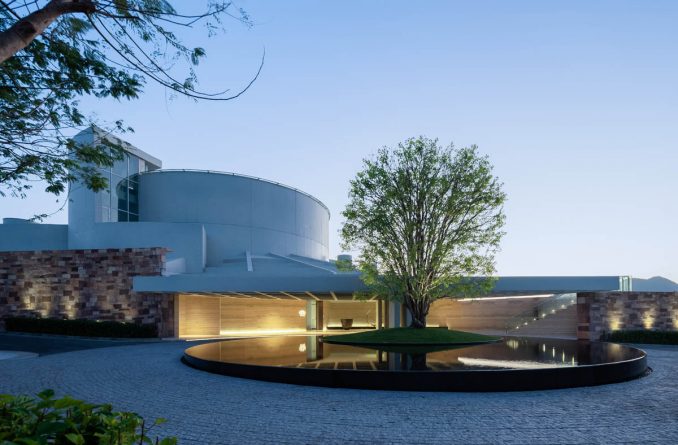
The landscape design of the exhibition area extends the architectural form and charm and tries to minimize the decorative language as much as possible. Instead, natural elements such as native trees, dynamic light and shadow, and scenery of mountains and seas are used as the protagonists of the space. The open and dynamic space layout forms a transparent and continuous visual experience, showing a minimalist artistic style. At the same time, the design pays attention to the coordination of form, material, color and texture, respecting the site environment and regional style.
The nodes of the main scenery combine the colour, form and characteristics of the architecture to successfully connect the landscape and architecture with nature, creating a wrap-around space, showing the beauty of natural rhythm.
The glistening mirror-like waterscape conveys a deep and fluid beauty. At the same time, the flexible water feature softens the rigid facade of the original building, so that the building and the landscape complement each other.
Landscape bench provides a quiet place to stop and watch the mountains and sea when people are walking under the forest.
ENERGY SAVING AND ECOLOGY
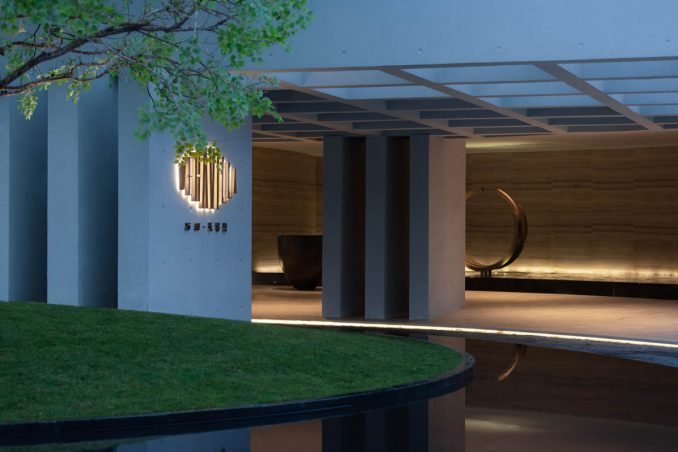
The lighting system can support circadian rhythms by changing color temperature throughout the day. This measure avoids direct sunlight, saves energy and consumes less energy, thus creating a low-carbon ecological community.
Biophilic design encourages curiosity, engagement, biodiversity and habitat restoration. The plant life is used to construct and shape the human experience, and extend the visual interest throughout the seasons. The soft landscape construction is based on the local characteristics and continues the unique ecosystem of Vanke Vega Villa. Native plants above 15 cm in diameter were preserved. In addition, this project also introduces a variety of aromatic plants and dozens of various ornamental plants to create the landscape tone of an ecological luxury mansion.
The main goal of this landscape enhancement is to maximize spatial quality, ecological environment and sustainability. After the landscape upgrade, the design is integrated with the natural landscape, and the area will form a strong green ecological framework, which is constituted by a series of different landscape elements, and natural features such as forests, sea views, and existing infrastructure such as recreational areas and roads are optimized. At the same time, the project has added new landscape nodes. The integration of these elements has greatly improved the travel experience of residents, and also embodies it with important ecological functions.
VANKE SHENZHEN • VEGA VILLA | Shenzhen, China | GND Jiedi Landscape Design
Project Name: Vanke Shenzhen · Vega Villa
Owner: Shenzhen Fuchun Oriental Real Estate Development Co., Ltd.
Developer Team: Qi Lin, Wu Zhitong, Ji Huimin, Lin Qianwen
Landscape Design: GND Jiedi Landscape Design
Design Content: landscape enhancement design
Project Location: Shenzhen, Guangdong
Project Area: 41425㎡
Design time: June 2021
Completion time: December 2021
Design cycle: 5 weeks
Chief Designer: Qiu Ge, Zhong Yongcheng
Concept design: Zhou Jiang, Yang Ke
Garden design: Zhang Canjie, Chen Chen, Zhou Zihua
Plant design: Zeng Fengling, Wang Tuotuo
Landscape construction: Guangzhou Pubang Landscape Co., Ltd.
Project Photography: Riye Photography
Planning/Visual Effects: iDEER LAB
